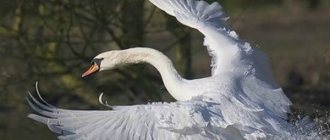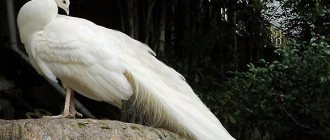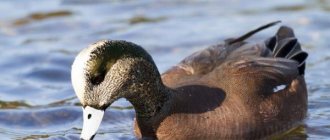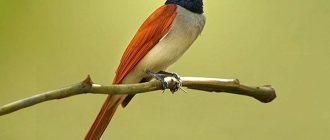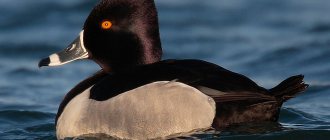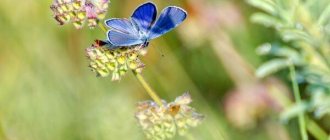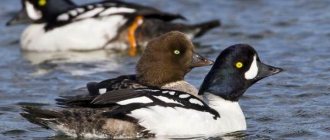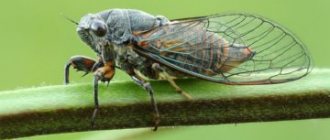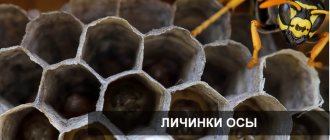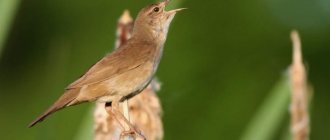- Wild animals
- >>
- Birds
The whooper swan is a very rare breeding bird in the UK but has a much larger population that spends the winter here after the long journey from Iceland. It has more yellow on its yellow and black bill. The whooper swan is one of the larger species of swans.
Origin of the species and description
Photo: Whooper Swan
Whooper swans breed in forest-tundra and taiga zones throughout Eurasia, south of the breeding range of Bewick swans, extending from Iceland and northern Scandinavia in the west to the Pacific coast of Russia in the east. Five main population groups of whooper swans have been described:
- Icelandic population;
- population of Northwestern continental Europe;
- population of the Black Sea, Eastern Mediterranean Sea;
- population of Western and Central Siberia, Caspian Sea;
- East Asian population.
However, there is very little information on the extent of whooper swans' movements between the Black Sea/Eastern Mediterranean and the Western and Central Siberian/Caspian Sea regions, and therefore these birds are sometimes considered to be a single Central Russian breeding population.
The Icelandic population breeds in Iceland and most migrate across the Atlantic Ocean 800–1400 km in winter, mainly to Britain and Ireland. About 1,000–1,500 birds remain in Iceland during the winter, and their numbers depend on weather conditions and food availability.
Video: Whooper Swan
The northwestern continental European population breeds throughout northern Scandinavia and northwestern Russia, with increasing numbers of pairs breeding further south (especially in the Baltic countries: Estonia, Latvia, Lithuania and Poland). Swans migrate south for winter, mainly in continental Europe, but some individuals are known to have reached south-east England.
The Black Sea/Eastern Mediterranean population breeds in Western Siberia and possibly west of the Urals, and there may be some degree of cross-relationship with the Western and Central Siberian/Caspian Sea population. Population of Western and Central Siberia/Caspian population. It is believed to breed in Central Siberia and by winter between the Caspian Sea and Lake Balkhash.
The East Asian population is widespread throughout northern China and the eastern Russian taiga during the summer months and winters primarily in Japan, China and Korea. Migratory routes are not yet fully understood, but calling and tracking programs are underway in eastern Russia, China, Mongolia and Japan.
Content
The whooper swan is a rather large migratory bird, so they spend most of their lives on the water. From the outside it seems that the birds are rather slow and clumsy, but when danger approaches, the swans begin to move very quickly through the water until they take off, so even by boat it is not always possible to catch up with them.
Currently, many large farmers breed these individuals on their plots as a decorative decoration. In order to keep swans, it is necessary that there be a small lake or artificial reservoir on the territory; if these requirements are violated, the swans will not be able to live long on the plot and will leave it at the slightest opportunity.
Appearance and features
Photo: What a whooper swan looks like
The whooper swan is a large swan, with an average length of 1.4 - 1.65 meters. The male tends to be larger than the female, averaging 1.65 meters and weighing around 10.8 kg, while the female usually weighs 8.1 kg. Their wingspan is 2.1 - 2.8 meters.
The whooper swan has pure white plumage, webbed feet and black feet. Half of the beak is orange-yellow (at the base) and the tip is black. These beak markings vary between individuals. The yellow markings extend in a wedge shape from the base to the nostrils or even behind them. Whooper swans also have a relatively upright posture compared to other swans, with a slight arch at the base of the neck and a relatively long neck relative to the overall body length. The legs and feet are usually black, but may be pinkish-gray or have pink spots on the legs.
Juvenile birds usually have white plumage, but gray individuals are also not uncommon. Fluffy swans are pale gray in color, with a slightly darker crown, nape, shoulders and tail. The immature plumage is gray-brown at the first pubescence, darker on the crown. Individuals become gradually white, at varying rates, during their first winter, and may become older by spring.
Fun fact: Whooper swans have high-pitched vocalizations in both summer and winter, with calls similar to those of Bewick's swans, but with a deeper, resonant, eerie tone. Strength and pitch vary depending on the social context, from loud, sustained notes during aggressive encounters and triumphant calls to softer "contact" noises between paired birds and families.
In winter, calls are most often used to establish dominance in flocks upon arrival at the wintering site. The bells that accompany a head impact are important in maintaining couple and family cohesion. They become increasingly louder before takeoff, becoming a higher pitched sound after flight. The furry juveniles make heavy squeaking sounds when in trouble and softer contact calls at other times.
From July to August each year, whoopers shed their flight feathers in their breeding range. Paired birds have an asynchronous tendency to moult. Unlike Bewick's swans, where yearlings are identified by trails of gray feathers, the plumage of most winter whoopers is indistinguishable from that of adults.
Interesting facts about the animal
- In Finland, the whooper swan is a national symbol; the word joutsen (swan) is present in the names of many firms and companies. Its image is confirmation of the quality of products made from environmentally friendly raw materials. In the spring, in almost all regions of the country, a celebration is held in honor of the return of birds to their nesting places.
- Each pair of whoopers jointly builds a nest from plant materials. The male, turning his tail to the chosen place, collects as much material as possible into his beak and, making sharp short throws back, transports them to the construction site. The female presses and forms the nest with her weight.
- The whooper swan got its name from its trumpet voice. Its strength and height varies. The manifestation of aggression is constant loud notes. The tone becomes softer when communication occurs between a couple or family.
- There is no name for the cubs of this species. Following the famous storyteller, they have long been called “ugly ducklings”.
To prevent the song of the whooper swan from truly becoming a death song, it is necessary to remember that the fate of these birds is in the hands of man. Sometimes presence, loud conversation can make them leave the nest they have built with love. There will be no quiet, comfortable place for it, which means the chicks will not appear. This will inevitably lead to disaster.
Still have questions or have something to add? Then write to us about it in the comments, this will make the material more useful, complete and accurate.
Where does the whooper swan live?
Photo: Whooper swan in flight
Whooper swans have a wide range and are found in the boreal zone within Eurasia and on many nearby islands. They migrate hundreds or thousands of miles to their wintering grounds. These swans usually migrate to winter territories around October and return to their breeding territory in April.
Whooper swans breed in Iceland, Northern Europe and Asia. They migrate from the south for the winter to western and central Europe - around the Black, Aral and Caspian Seas, as well as the coastal areas of China and Japan. In the UK they breed in northern Scotland, especially Orkney. They winter in northern and eastern England, as well as in Ireland.
Birds from Siberia winter in small numbers in the Aleutian Islands, Alaska. Migrants sometimes migrate to other points in western Alaska, and are very rarely found further south along the Pacific coast to California in winter. Single and small aggregations, which are rarely seen in the northeast, may be escapees from captivity or those that left Iceland.
Whooper swan mates and builds nests on the banks of freshwater reservoirs, lakes, shallow rivers and swamps. They prefer habitats with emerging vegetation, which can offer additional protection for their nests and newborn swans.
Now you know where the whooper swan from the Red Book is found. Let's see what the beautiful bird eats?
What does a whooper swan eat?
Photo: Whooper Swan from the Red Book
Whooper swans feed primarily on aquatic plants, but they also eat grains, grasses, and agricultural products such as wheat, potatoes, and carrots—especially in winter when other food sources are unavailable.
Only young and immature swans feed on aquatic insects and crustaceans, as they have a higher protein requirement than adults. As they get older, their diet changes to a plant-based diet that includes aquatic vegetation and roots.
In shallow water, whooper swans can use their strong webbed feet to dig through submerged mud, and like mallards, they capsize, putting their head and neck underwater to expose roots, shoots and tubers.
Whooper swans feed on invertebrates and aquatic vegetation. Their long necks give them an advantage over short-necked ducks as they can feed in deeper waters than geese or ducks. These swans can feed in waters up to 1.2 meters deep by uprooting plants and trimming leaves and stems of plants growing underwater. Swans also obtain food by collecting plant material from the surface of the water or at the water's edge. On land they feed on grain and grass. Beginning in the mid-1900s, their winter behavior changed to include more ground feeding.
Nutrition
Birds feed on food of both plant and animal origin. But their entire diet is inextricably linked with water and consists of:
- aquatic plants,
- algae,
- Duckweeds,
- Small invertebrates,
- fish fry,
- shellfish,
- Crustaceans,
- Insects and their larvae.
It is very rare to see a whooper swan nibbling grass near a pond, as other members of the order do.
Only during migration can whoopers land on the ground far from lakes and rivers and feast on worms, cereals, seeds, roots and berries. The explanation is simple - during migration, swans need food richer in proteins.
Features of character and lifestyle
Photo: Whooper swan bird
The swan nesting season is timed to use readily available food supplies. Nesting usually occurs from April to July. They nest in areas with sufficient food supplies and shallow and unpolluted water. Usually only one pair nests on one body of water. These nesting territories range in area from 24,000 km² to 607,000 km² and are often located near where the female hatched.
The female chooses the nest and the male defends it. Swan pairs are more likely to return to the same nest if they have been able to successfully raise young there in the past. Pairs will either build a new nest or repair the nest they used in previous years.
Nesting sites are often located in slightly elevated areas surrounded by water, such as:
- on top of old beaver houses, dams or mounds;
- on growing vegetation that either floats or is fixed to the bottom of the water;
- on small islands.
Nest construction begins in mid-April and can take up to two weeks to complete. The male collects aquatic vegetation, grasses and sedges and transfers them to the female. She first piles plant material on top and then uses her body to form a depression and lay her eggs.
The nest is basically a large open bowl. The inside of the nest is covered with down, feathers and soft plant matter found in its surroundings. Nests can reach a diameter of 1 to 3.5 meters and are often surrounded by a ditch of 6 to 9 meters. This ditch is usually filled with water to make it more difficult for predatory mammals to reach the nest.
Lifestyle
The birds return to their nesting sites in pairs in early spring. In mid-March they begin to build nests, and by April they lay their first eggs. Whooper swans form strong family pairs and prefer the same nesting site for many years. Birds settle along the banks of calm and quiet rivers and lakes, bays and estuaries. Wetlands are less often chosen.
They prefer to stay in open water and not come close to the shore: if possible, they will even build a nest on a small hummock away from the shore.
Swans are very territorial birds. They carefully protect their territory not only from their relatives, but also from other birds and mammals. It is not uncommon for a pair of birds to kill careless ducks, crows and ravens, wild pigeons, birds of prey, as well as mice, rats, muskrats and even snakes that find themselves dangerously close to the nest or chicks.
Social structure and reproduction
Photo: Whooper swan chicks
Whooper swans breed in freshwater marshes, ponds, lakes and along slow rivers. Most swans find their mates before the age of 2 years, usually during the winter season. Although some may nest for the first time at age two, most do not begin until they are between 3 and 7 years old.
Upon arrival at the breeding territory, the pair engages in mating behavior that includes bobbing their heads and bumping each other with their quivering wings.
Fun fact: Pairs of whooper swans usually bond for life, and remain together throughout the year, including moving together in migratory populations. However, it has been observed that some of them change partners during their lives, especially after a failed relationship, and some who lose their partners do not remarry.
If a male mates with another younger female, she will usually move to him on his territory. If he mates with an older female, he will go to her. If a female loses her mate, she usually mates quickly, choosing a younger male.
Bonded pairs tend to stay together all year round; however, outside of the breeding season, they are very social and often gather with large numbers of other swans. However, during the breeding season, pairs will aggressively defend their territories.
Egg laying usually occurs from late April to June, sometimes even before the nest is completed. The female lays one egg every other day. Usually there are 5-6 creamy white eggs in a clutch. However, in some cases as many as 12 have been found. If this is the female's first clutch, there will likely be fewer eggs, and more of those eggs will likely be infertile. The egg is about 73 mm wide and 113.5 mm long, weighing about 320 g.
Once the laying is complete, the female begins incubation of the eggs, which lasts about 31 days. During this time, the male remains close to the nesting site and protects the female from predators. In very rare cases, the male may assist in laying the eggs.
Fun Fact: During the incubation period, the female will only leave the nest for short periods to feed on nearby vegetation, bathe, or preen. However, before leaving the nest, she will cover the eggs with nesting material to hide them. The male will also remain nearby to protect the nest.
Breeding at home
Swans are beautiful enough to attract the attention of even the most picky bird watchers. It is not surprising that many bird lovers are seriously thinking about the possibility of keeping them at home.
Requirements for an enclosure, pond
In summer, it is best to keep birds in an aviary, and the larger it is, the better - at least 5 square meters for each pair of birds. Well, the height should be appropriate - at least 2-3 meters.
In the winter season, you need to take care of more capital construction. It is best to build a wooden (or plywood) shed with insulation. The minimum height is 2 meters, and the area is 3 square meters. meters for a couple of swans.
It is very important to maintain the temperature at least +16..+18 degrees Celsius so that the birds can easily endure the winter.
Important! Even in winter, birds should have the opportunity to swim in the water. Without this, the skin on their paws cracks, which leads to serious illness.
In the warm season, birds will spend most of their time on the pond. They definitely need him. Ideally, you can dig a small pond - at least 5-7 square meters. meters in area with a depth of 1 meter. If they swim in a large pond or lake, you need to create a fence - otherwise the swans may well swim away or fly away.
Diet, supplements
In order for birds to feel great, they need to be provided with a suitable diet that is as close to natural as possible. In summer, a bird should receive per day:
- green food (vegetables, chopped grass) - 500 g;
- fish - 250 g;
- cereals (bran, sprouted barley or millet) - 250 g;
- mineral supplements (bone meal, chalk) - 20 g.
In the winter season, it can be difficult to maintain such a diet, so many farmers switch to a different diet:
- cereals (oats, bran, barley) - 700 g;
- vegetables (carrots, pumpkin, beets) - 300 g;
- fish or meat products - 20 g;
- mineral supplements - 30 g.
With this diet, birds quickly gain weight, rarely get sick and live long.
Time to Mate
Birds in captivity typically breed at the same time as in the wild. But if the room temperature is higher, then the schedule may shift by a week or two, that is, by mid-April the couple needs to create suitable conditions for reproduction.
Swan with a litter of chicks
Nest for hatching chicks
It is best to give the birds the opportunity to build a nest that suits their requirements. To do this, you need to place a box about 2.5-3 meters in size and 1.5-2 meters high near the water, and leave the necessary building material nearby - small branches, hay. They will do the rest themselves exactly as needed.
Natural enemies of the whooper swan
Photo: Whooper swans
Human activity threatens whooper swans.
Such activities include:
- hunting;
- destruction of the nest;
- poaching;
- habitat loss and degradation, including restoration of inland and coastal wetlands, especially in Asia.
Threats to whooper swan habitat include:
- agricultural expansion;
- overgrazing of livestock (eg sheep);
- draining wetlands for irrigation;
- cutting down vegetation to feed livestock for the winter;
- road development and oil pollution resulting from oil exploration;
- operation and transportation;
- anxiety from tourism.
Illegal swan hunting still occurs, and collisions with power lines are the most common cause of death for whooper swans wintering in northwestern Europe. Lead poisoning associated with ingestion of lead shot during fishing remains a problem, with a significant proportion of specimens tested having elevated blood lead levels. The species is known to have contracted avian influenza, which has also harmed the birds.
In summary, current threats to whooper swans vary by location, with causes of habitat degradation and loss including overgrazing, infrastructure development, development of coastal and inland wetlands for farming expansion programs, hydroelectric dam construction, and disturbance from tourism and oil spills.
origin of name
The swan was called a whooper because of its unique and very characteristic ringing, trumpet sounds. Most often, birds vocalize in the spring, during the mating season, during migration, and also in case of danger. Sounds differ in their volume, duration and appearance. To communicate with babies, birds prefer a quiet click; in case of irritation, they make a sound more like a loud snake hiss, and in normal situations they produce multiple “clicks”, which can sometimes be heard for many kilometers.
Population and species status
Photo: What a whooper swan looks like
Statistics state that the global population of whooper swans is 180,000 birds, with the Russian population estimated at 10,000-100,000 mating pairs and approximately 1,000,000,000 wintering individuals. The population of Europe is estimated at 25,300–32,800 couples, corresponding to 50,600–65,500 mature individuals. In general, whooper swans are currently classified as least endangered in the Red Book. Populations of this species appear to be fairly stable at the moment, but its wide range makes estimates difficult.
The whooper swan has shown a significant increase in population size and range expansion in Northern Europe over recent decades. The first breeding was reported in 1999, and breeding was reported at a second site in 2003. Since 2006, the number of breeding sites has increased rapidly and the species is now reported to breed in a total of 20 sites. However, at least seven sites were abandoned after one or more years of breeding, resulting in a temporary decline in population size after several years.
Further expansion of the whooper swan population may soon lead to increased competition with other swans, but there are many other potential breeding sites without swans present. Whooper swans play a vital role in influencing plant community structures due to the large amount of biomass lost when they feed on their preferred submerged macrophyte, fennel, which stimulates the growth of ponds at intermediate depths.
Differences from other species
Very often, whoopers are confused with their close relatives - small swans and mute swans. The descriptions of the birds are very similar, but there are many differences. The whooper swan differs from the mute swan by the absence of a clearly visible bump at the base of its beak, as well as by its straight neck. It can also be distinguished from a mute bird by its shorter tail and straight wings pressed tightly to the body. The lesser whooper swan is distinguished by its larger size. The color of the whooper's beak is predominantly yellow rather than black.
